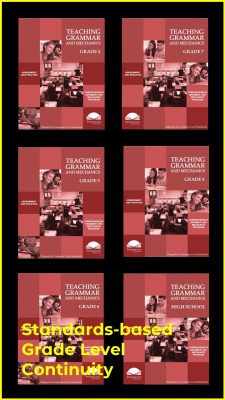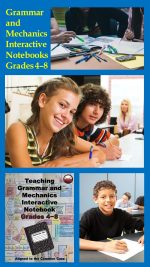The Serial (Oxford) Comma
The serial comma, also known as the Oxford comma, has some staunch devotees and some equally staunch nay-sayers.
Okay, let’s keep things in perspective, shall we? Comma rules are not the most important components of human communication, right? However, the simple comma does impact the specific meaning of a sentence, as well as how the sentence is interpreted.
For the want of a comma…
–A man’s civil rights were lost. The Louisiana Supreme ruled that accused and self-confessed rapist, Warren Demesme, was not asserting his right to counsel when he stated, “This is how I feel, if y’all think I did it, I know that I didn’t do it so why don’t you just give me a lawyer dog ’cause this is not what’s up.”
The Orleans Parish district attorneys argued that the lack of the comma between “lawyer” and “dog” meant that the accused was asking for a “lawyer dog,” not a “lawyer, dawg.” Now, no one would defend the self-confessed actions of the accused, but Americans do uphold the Constitutional right of the accused to an attorney and the right “to remain silent.” The comma (or lack thereof) certainly has significance in this case.
For the want of a comma…
–Your grandfather was cannibalized. “Let’s eat Grandpa.” The comma (or lack thereof) would certainly matter to your grandfather.
Now to be clear, the above examples are issues of commas placed before nouns of direct address. No one argues that this comma rule is superfluous. However, Americans are divided in their views on the serial comma rule (also known as the Oxford or Harvard comma rule). For a refresher, the serial comma is a comma placed before the coordinating conjunctions and or or when listing three or more items. The use, misuse, or non-use of the serial comma has its own consequences:
For the want of a serial comma…
–$10,000,000 was lost in a Maine court judgment. In a class action lawsuit against a dairy company regarding overtime pay for its truck drivers, the workers prevailed because the state laws on overtime regulations did not include a serial comma. (See Daniel Victor’s March 16, 2017 article in the Washington Post for the details.)
In sum, punctuation, including the serial comma, does affect meaning.
To include or not include the serial comma…
Now, I’m sure that most of you already have made up your minds regarding whether we should or should not use the serial comma. Those who don’t care have stopped reading by now or never looked at this article.
My take is that your views have been chiefly influenced by one or both of two factors: 1. What you read 2. Your most influential English teacher
- If you read online news, blogs, posts, texts, and emails as your primary daily reading, you are exposed to a high percentage of text without the serial comma. If you read novels or technical materials, manuals, and reports as your primary daily reading, you are exposed to a high percentage of text with the serial comma. English teachers used to characterize these distinctions as informal and formal reading, but these lines have become blurred in the digital age.
- We tend to dig in and defend what we have been taught. Our English teachers taught us one way and marked us wrong if we used the other way. As an English teacher at the middle school, high school, and college levels and author of numerous grammar books and a writing style manual, I’ll let you in on a little secret: We English teachers don’t know the comma rules better than the average educated American. We never had a graduate level class on writing mechanics.
My take? I value the use of the serial comma for three reasons: clarity, consistency, and conformity. However, its usage should be dictated by the writing genre.
Clarity
Garner’s Modern American Usage (Oxford, 2009) nicely clarifies the issue of clarity with or without the serial comma:
“Whether to include the serial comma has sparked many arguments. But it’s easily answered in favor of inclusion because omitting the final comma may cause ambiguities whereas including it never will” (Garner 676).
A few specific examples demonstrate why the serial comma provides clarity and avoids ambiguity.
The serial comma permits the use of compound subjects or objects in lists. (Remember, compound means two or more.)
Example without the Serial Comma: For lunch I enjoy hot dogs, peanut butter and jelly and fish. In this example, “peanut butter and jelly” is a compound object. A serial comma following would add clarity and prevent a truly gross sandwich.
Additionally, I’m not comma crazy, but I would also use a comma when listing only two items in a list if the and or or coordinating conjunction joins a compound subject or object. Example without the Serial Comma: On our summer trip to Britain, we want to visit the Fox and Hound and Stratford upon Avon. Most would agree that a comma following “Hound” would clear things up quite a bit for the reader.
Failing to use the serial comma can produce problems with appositives. Remember that an appositive identifies, describes, defines, or explains what comes before or after a part of speech (usually a noun or a pronoun). Most of the funny examples that you see posted to argue in favor of the serial comma involve confusing appositives.
Example without the Serial Comma: I just finished mailing letters to my children, Santa Claus and Jimmy Fallon; At the banquet we dined with good old friends, Donald Trump and Hillary Clinton; At the Halloween party I danced with Mrs. Peabody’s two ex-husbands, Wonder Woman and Cleopatra.
Notice that in the above examples, appositives become confusing when the first item listed in a series is a common noun (an uncapitalized idea, person, place, or thing), followed by two or more proper nouns (a capitalized person, place, or thing).
Now, articles which purport to be objective regarding the serial comma usually trot out confusing appositives to argue why serial commas can be just as ambiguous as the lack thereof.
Example with the Serial Comma: We ate dinner with Kim Kardashian, the reality television star, and the delightful Taylor Swift.
Those using this sentence example (serial killers? No, too harsh) suggest that three women may be inferred here. However, their argument sets up a straw dog to prove their point. The sentence is not an example of an ambiguous serial comma at all; it is a mistake in syntax (the order of words in a sentence). A good English teacher would suggest either of these two revisions: 1. We ate dinner with Kim Kardashian (the reality television star) and the delightful Taylor Swift. 2. We ate dinner with Kim Kardashian, who is a reality television star, and the delightful Taylor Swift. The first sentence uses a parenthetical insertion and the second uses a non-restrictive relative clause.
Consistency
In addition to providing clarity, the serial comma rule is also consistent with other Standard American English punctuation. Specifically, the serial comma rule is consistent with other punctuation rules regarding the separation of items in a list.
For example, semicolons may be used to separate long phrases or clauses in a list. No anti-serial comma journalist would ever abandon the last semicolon in the following list:
Semicolon Example: The Martin landed on Earth; the Venetian attempted to communicate; and the Air Force Captain asserted her belief that extraterrestrials did, indeed, exist.
Moreover, the use of the serial comma appeals to our sense of parallelism. Parallel ideas, grammatical structures, and punctuation are characteristics of consistent, predictable, memorable, reader-friendly writing. As Mary Norris, writing in The New Yorker, states, “If a sentence were a picket fence, the serial commas would be posts at regular intervals.”
Example: Four score and seven years ago our fathers brought forth on this continent, a new nation, conceived in Liberty, and dedicated to the proposition that all men are created equal.
Lincoln’s example shows the impact of parallel ideas, grammatical structures, and punctuation. Without the serial comma in the sentence above, the cadence of the writing and speech would be altered and inconsistent with the other parallel forms in The Gettysburg Address.
Those proposing the elimination of the serial comma always seem to add the following caveat to their position: Drop the serial comma unless its elimination would be confusing to the reader. Inconsistency is built into their rule; such is not the case for the serial comma rule. Such is the stated position of the only major style guide which supports the elimination of the serial comma.
Conformity
Only the Associated Press (AP) stylebook supports dropping the serial comma “unless deemed absolutely necessary.” Admittedly, the AP position has wielded tremendous influence. Following AP style, newspapers uniformly omit the serial comma. Both prestigious papers, such as The New York Times and tabloids, such as The National Enquirer, avoid the comma. Some magazines, such as People and Variety, do so as well. Furthermore, the lack of the serial comma is also firmly entrenched in digital media, largely due to the AP influence. Because of the pervasiveness of such digital news, the serial comma’s days may be numbered.
However, the use of the serial comma is supported in the overwhelming majority of academic style guides: Chicago, Turabian, Modern Language Association, American Psychological Association, Strunk and White’s Elements of Style, and the U.S. Government Publishing Office Style Manual 8.27, 8.28. Also, contrary to much of what you may have heard, the serial comma has not been abandoned in all periodicals. For example, The Atlantic, The New Yorker, and Harper’s Magazine adhere to its usage.
Additionally, the respected Online Writing Lab of Purdue University (a favorite go-to guide for teachers and students) supports the serial comma rule.
Clearly we have a divergence of authoritative opinion and common usage regarding the serial comma. Despite the clear advantages of the serial comma in terms of clarity and consistency, conformity to the dictates of the writing genre (and the editor or teacher’s demands) makes the most practical sense. I’ll close with a few pragmatic applications:
- When writing a newspaper article, omit the serial comma.
- When writing an article for a blog or magazine, ask the editor whether or not to use the serial comma. Conform to whomever is paying the bills.
- When writing informally on the web, in letters, cards, emails, texts, posts,flyers, bulletins, etc., pick your poison, but be consistent as possible. Try not to judge others’ usage too harshly in this transitional “no-man’s land.”
- When writing reports, essays, narratives, novels, and documents, use the serial comma.
- Teachers should teach the serial comma and expect its usage in formal academic writing. However, the discussion of its use in different writing genre and in the evolution of our language is also productive. Using the serial comma to explain the purpose of punctuation and how it affects meaning is valuable.
*****

Pennington Publishing Grammar Programs
Teaching Grammar, Usage, and Mechanics (Grades 4, 5, 6, 7, 8, and High School) are full-year, traditional, grade-level grammar, usage, and mechanics programs with plenty of remedial practice to help students catch up while they keep up with grade-level standards. Twice-per-week, 30-minute, no prep lessons in print or interactive Google slides with a fun secret agent theme. Simple sentence diagrams, mentor texts, video lessons, sentence dictations. Plenty of practice in the writing context. Includes biweekly tests and a final exam.
Grammar, Usage, and Mechanics Interactive Notebook (Grades 4‒8) is a full-year, no prep interactive notebook without all the mess. Twice-per-week, 30-minute, no prep grammar, usage, and mechanics lessons, formatted in Cornell Notes with cartoon response, writing application, 3D graphic organizers (easy cut and paste foldables), and great resource links. No need to create a teacher INB for student make-up work—it’s done for you! Plus, get remedial worksheets, biweekly tests, and a final exam.
Syntax in Reading and Writing is a function-based, sentence level syntax program, designed to build reading comprehension and increase writing sophistication. The 18 parts of speech, phrases, and clauses lessons are each leveled from basic (elementary) to advanced (middle and high school) and feature 5 lesson components (10–15 minutes each): 1. Learn It! 2. Identify It! 3. Explain It! (analysis of challenging sentences) 4. Revise It! (kernel sentences, sentence expansion, syntactic manipulation) 5. Create It! (Short writing application with the syntactic focus in different genre).
Get the Diagnostic Grammar, Usage, and Mechanics Assessments, Matrix, and Final Exam FREE Resource:
![]()











